Sonora state bonds
1881 Treasury bonds
On 10 December 1881 in another effort to raise finance Governor Cárlos R. Ortiz published a law (núm. 22) authorising the Executive to issue 400,000 pesos in Treasury notes or certificates of deposit, redeemable on sight and to the bearer (billetes del Tesoro del Estado ó certificados de depósito, expedidos por la Tesorería General del mismo, reembolsales á la vista y al portador). The notes were to be issued in series of 1, 5, 10, 20, 50 and 100 pesos and signed by the Governor, the Secretary of State (Secretario de Estado), the Treasurer General (Tesorero General) and the Treasury Cashier (Contador de la Tesorería). They were to be of voluntary acceptance except in state and local finance offices, where they were to be taken as cash and at par in payment of taxes. Sixteen of the decree’s twenty-one articles deal with the legal redress available for any holder whose note was not accepted and with the penalties for counterfeiting, a fact that must have inspired confidenceLa Constitución, 20 December 1881.
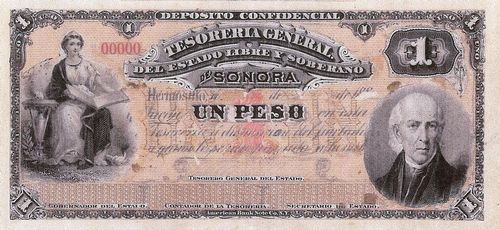
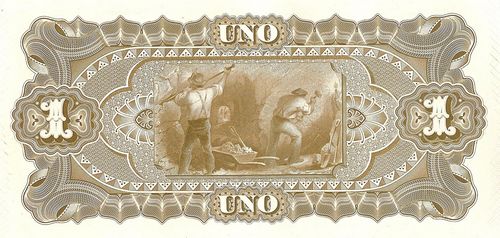 M759.2 $1 Tesorería General
M759.2 $1 Tesorería General
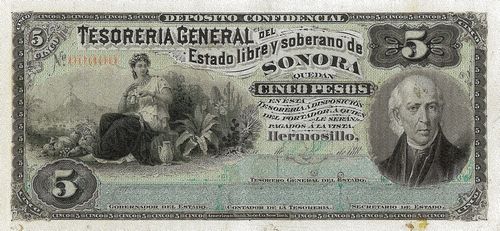
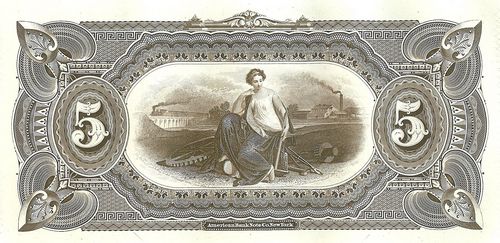 M759.3 $5 Tesorería General
M759.3 $5 Tesorería General
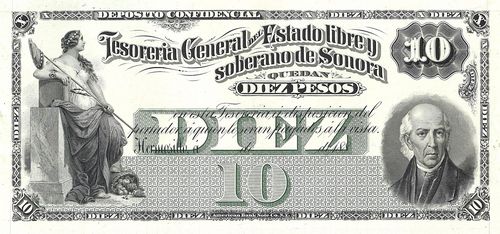
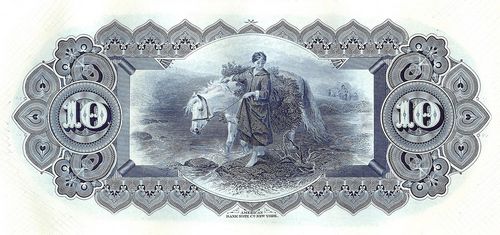 M759.4 $10 Tesorería General
M759.4 $10 Tesorería General
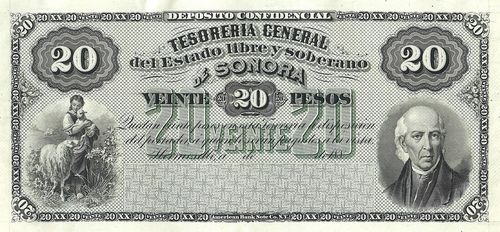
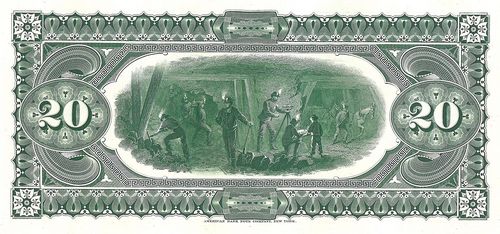 M759.5 $20 Tesorería General
M759.5 $20 Tesorería General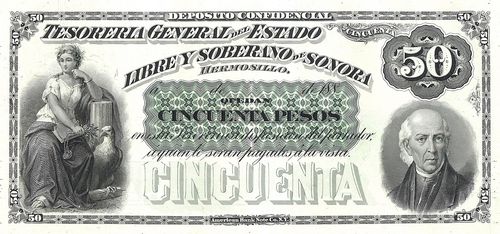
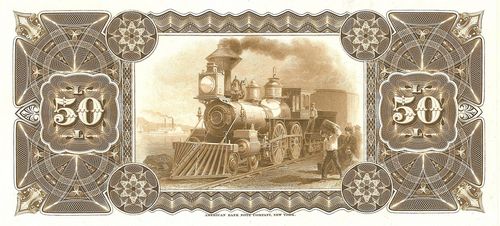 M759.6 $50 Tesorería General
M759.6 $50 Tesorería General
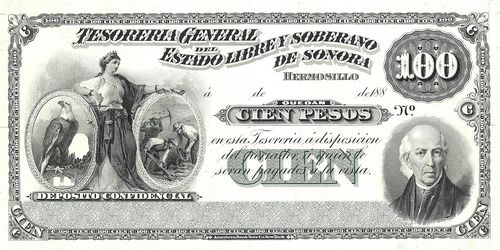
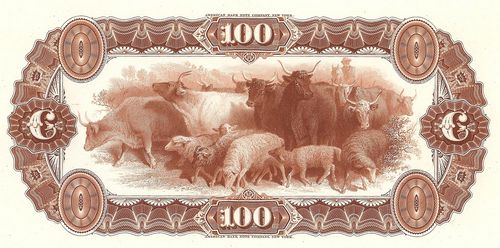 M759.7 $100 Tesorería General
M759.7 $100 Tesorería General
The American Bank Note Company received an order for $500,000 worth of bondsThe order was
$1 30,000 notes worth $30,000
$5 12,000 $60,000
$10 6,000 $60,000
$20 4,000 $80,000
$50 2,600 $130,000
$100 1,400 $140,000
56,000 $500,000 and produced some proofs but they were ordered to stop work on 23 January 1882. The proofs are of all six denominationsAs well as production material known are reverse proofs for the $1 and $5 and face and reverse proofs for the other four denominations and show that they were legally certificates of deposit, recording that a certain amount remained on deposit in the Treasury at the disposition of the bearer (Quedan ... pesos en esta Tesorería á disposción del portador á quien le seran pagados á la vista).
A series of ABNC models show alterations made and colours suggested during the process.
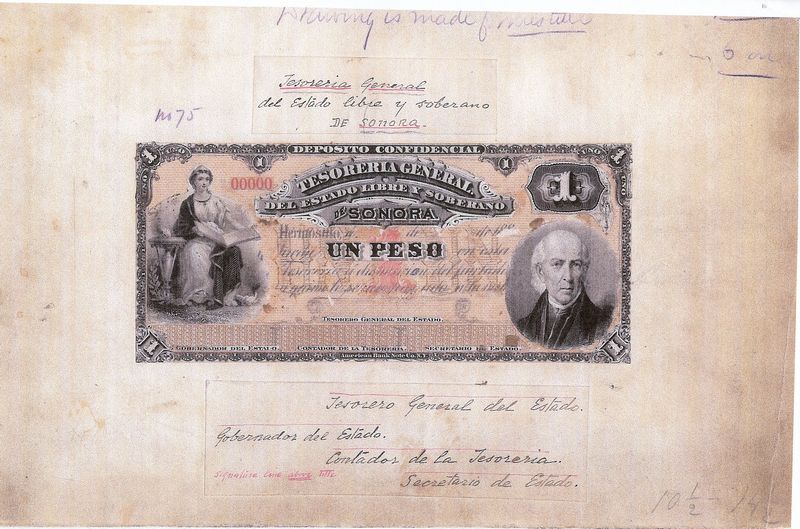
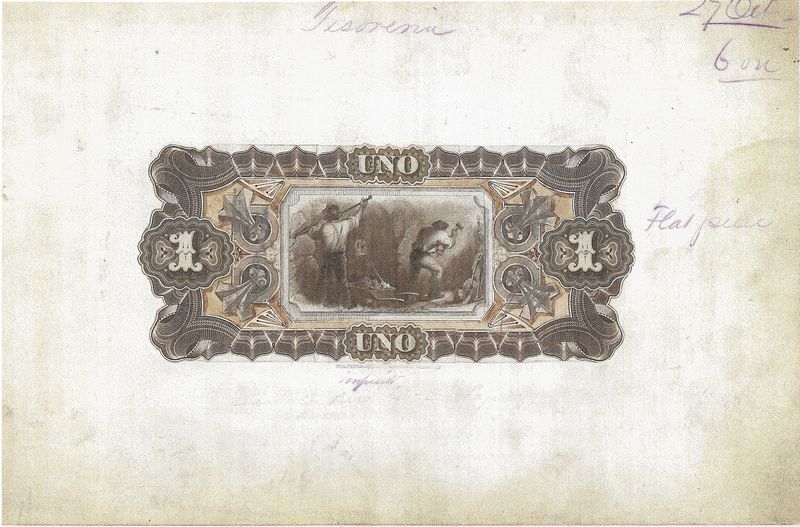 M759.2 $1 Tesorería General
M759.2 $1 Tesorería General
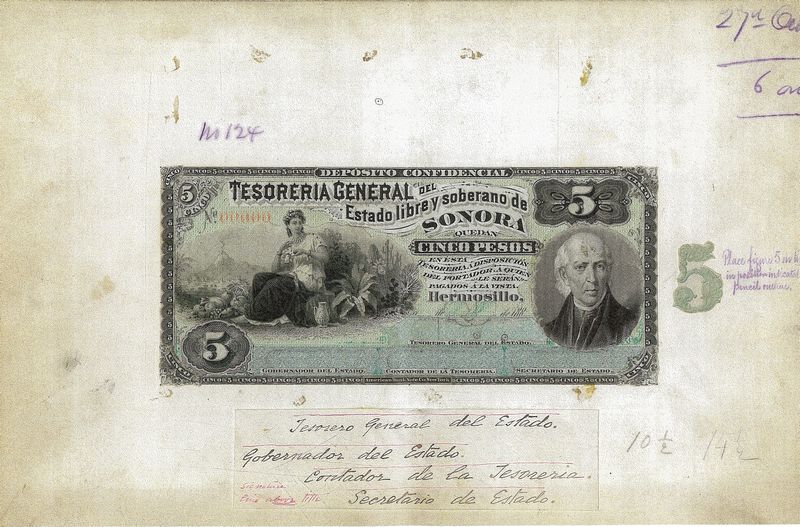
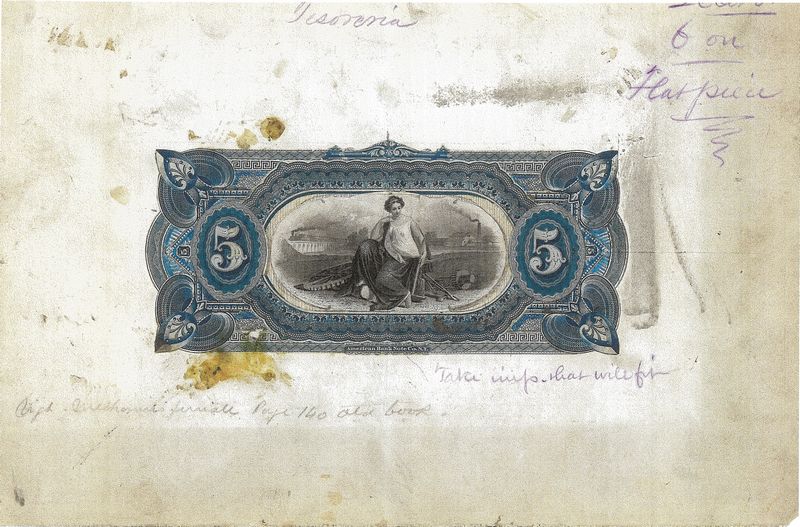 M759.3 $5 Tesorería General
M759.3 $5 Tesorería General
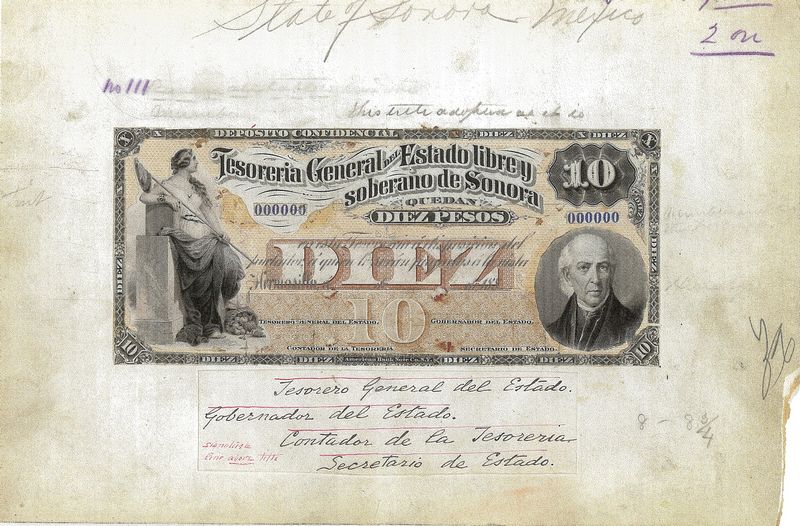
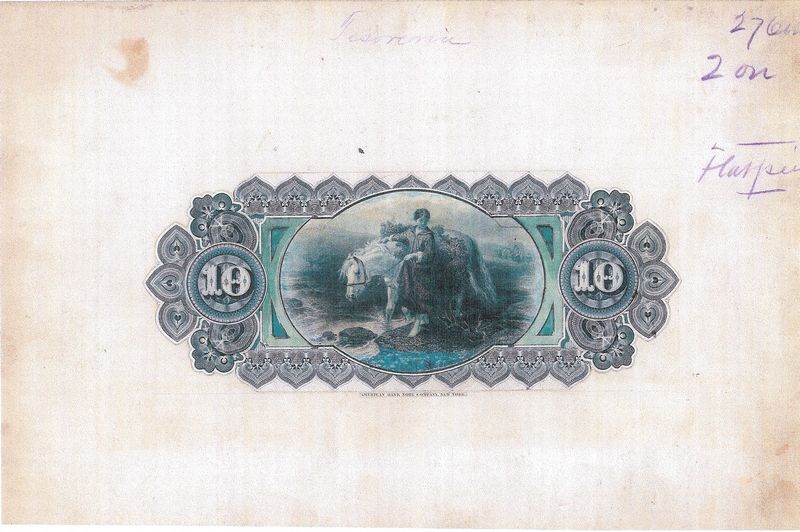 M759.4 $10 Tesorería General
M759.4 $10 Tesorería General
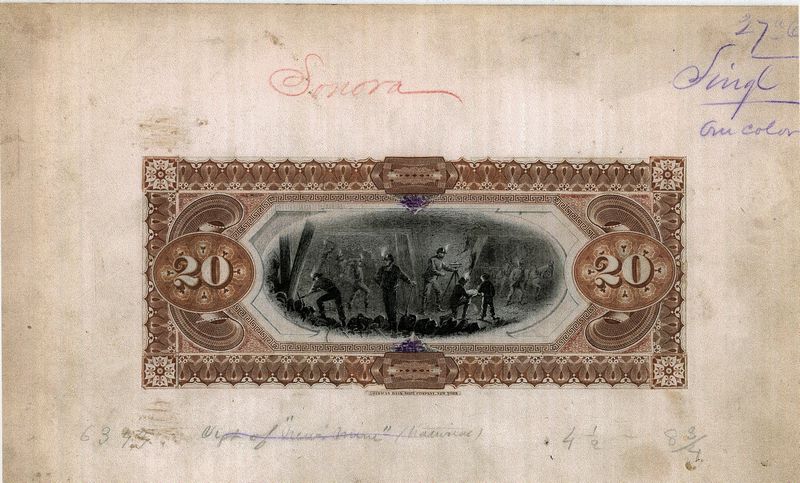 M759.5 $20 Tesorería General
M759.5 $20 Tesorería General
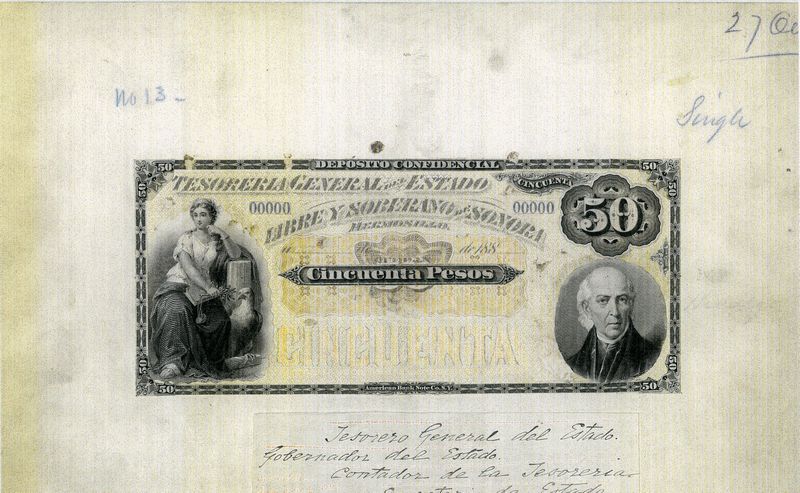
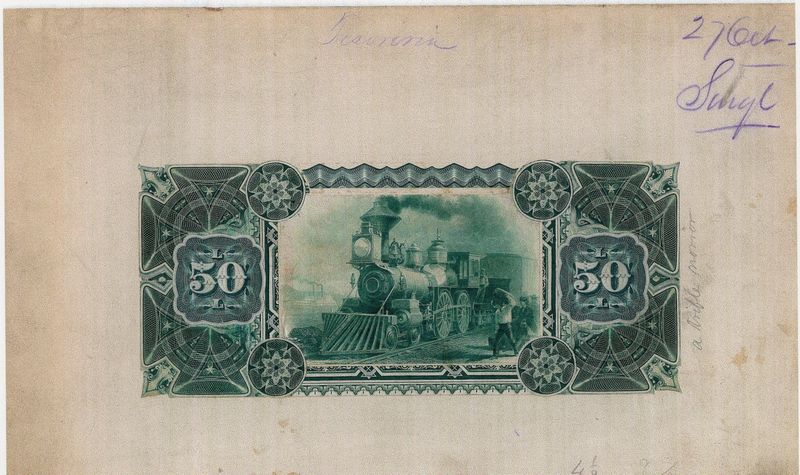 M759.6 $50 Tesorería General
M759.6 $50 Tesorería General
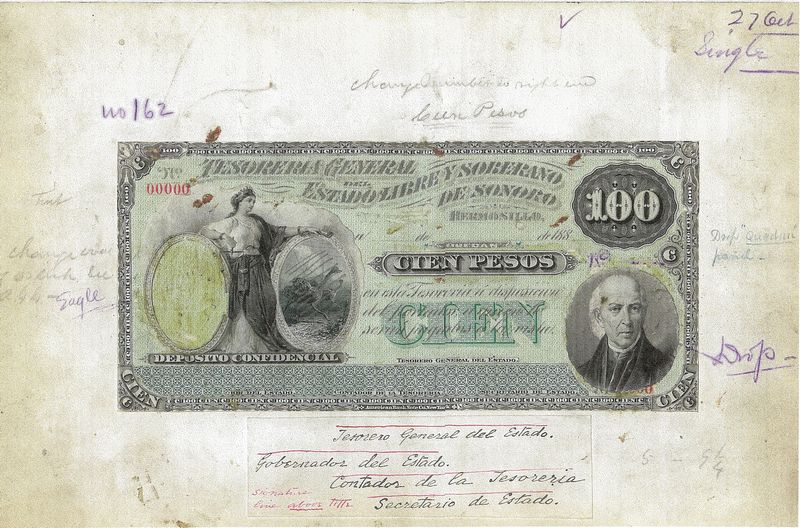
It would have been amusing if the ABNC had left in the ostrich, rather than replacing it with the Mexican eagle
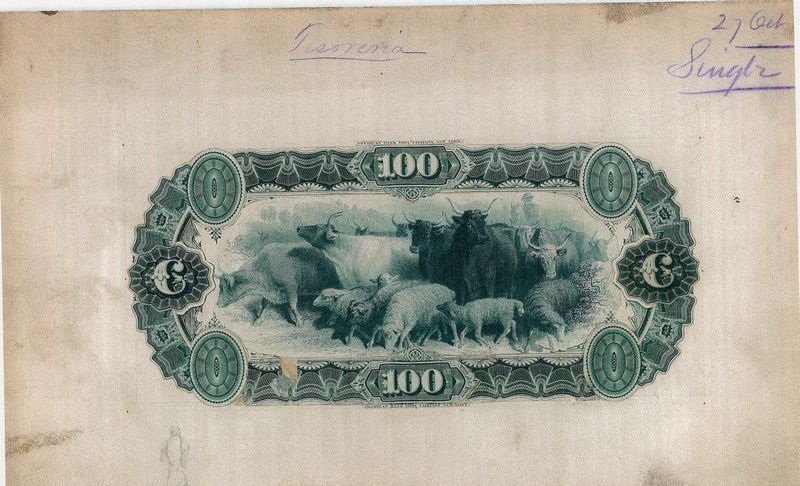 M759.7 $100 Tesorería General
M759.7 $100 Tesorería General
Other bonds
In the next twenty years there are a few references to other bonds. Thus, a bond number 26 for $200 was issued to Fernando S. Robles on 2 August 1889. Eleven days later it was endorsed to Carmelo Echeverría, who claimed $75 on it the next month, leaving $125 outstanding. On 2 January 1890 the bond was endorsed to Santiago Salcido, and finally cashed by his widow in 1921AGHES, Fondo Oficialidad Mayor, tomo 3417, exp. 1.
On 28 March 1890 Manuel Mascareñas wrote to Rafael Ruiz asking him to buy $200 in state bonds (bonos del Estado) and send them to Victor Aguilar as payment for a patent to distill mescalMM papers, copybook, vol. 4, p355, Mascareñas, Nogales to Ruiz, Hermosillo 28 March 1890. He had previously tried to buy them from Cirilo RamírezMM papers, copybook, vol. 4, p354, Mascareñas, Nogales to Victor Aguilar, Hermosillo 28 March 1890.
The bonds (Bonos del Estado) that covered the $1,100 owed to Rafael Córdova were numbered 26 (sic) to 31 and dated 3 November 1899Córdova was owed the money as part of the $45,000 loan for the amortisacion of the copper coinage: he had received a certificate from the Jefe de Hacienda de las rentas Federales y del Estado, dated 20 September 1867, for $1,100 (AGHES, no reference). Again, in 1898 and 1899 the Banco de Sonora was offering to buy and sell bonds at what it claimed were the best rates possibleEl Correo de Sonora, Guaymas, 10 October 1899.
